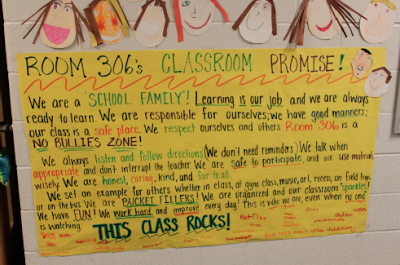As we discuss the expectations we have for the school year, we also discuss the actions that could hold us back from reaching the goals we set. We compile an anchor chart of the rules we feel would be important to follow in order to have a successful year. These are eventually pruned down to encompass only a few umbrella rules. However, because we spent time spelling them out (so to speak), the students are more likely to understand the specific actions that would fit under each umbrella rule. They are also more likely to follow the rules, not only because we put in the time to discuss the specifics, but also because they helped make them. The rules weren’t done to them. They made the rules. They operate within a democratic community in Room 306. In a sense, it’s a classroom for the students, by the students.
Establishing Classroom Rules and Building Community
At the beginning of every school year, I send welcome letters out to my incoming students. I want them to feel comfortable on day one, and I also want them to be excited about what’s ahead. The other reason I send home letters is because I want them to begin thinking about what they want their classroom to look and feel like on day one. I stress, year after year, that our classroom belongs to each of us. It is not just my classroom. It is ours. Each person in Room 306 assumes ownership and the responsibilities that come along with it. We become a community. We become learners. We become family. To facilitate the closeness I hope to achieve every school year, we begin by articulating our own classroom rules.
After the rules are discussed, recorded on an anchor chart, and pruned down to 5-6 core rules, I take their original list and consider our conversation. I also think about the goals and expectations that I have as a teacher. I combine all of these ideas and concepts and create a “Classroom Promise” banner. I write down each rule and expectation in paragraph form, and it becomes our class mission statement for the school year. Once it is written out, I read it to the students and they ultimately have the final say. They let me know if it needs revised, or if it fits the goals we have for ourselves in Room 306. Once it is ready for the world and the students are satisfied, each child signs the “Classroom Promise” and it becomes a binding contract. The banner is hung in the hallway for everyone to see, and the students create self-portraits that are displayed around it. Our hope is that we can set a good example for other classes while cultivating friendships, engaging in learning, and being good citizens.


Leave a Reply